Bermondsey, London, is an urban neighborhood lined with concrete tower blocks that dominate the landscape. It seems unlikely that the place could be suitable for beekeeping, but this is where you will find Bermondsey Bees, a six-hive operation managed by Dale Gibson.
Situated four stories above street level on the rooftop of his home, Gibson has successfully reared bees for the past eight years producing Bermondsey Street Honey, and proving that keeping hives doesn’t require large green spaces.
Referring to the bees as “his girls”, Gibson is genuinely passionate and extremely knowledgeable about beekeeping, a hobby-turned-business that he calls “Bee-To-Jar.”

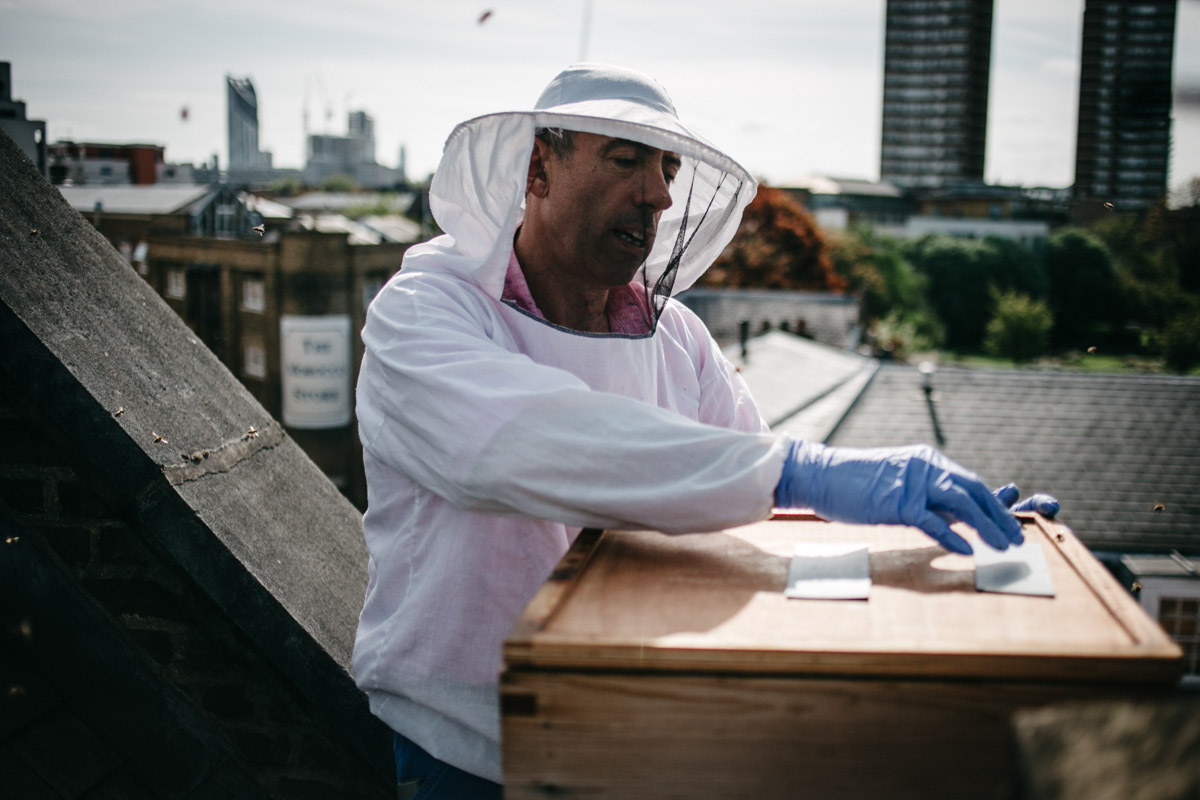
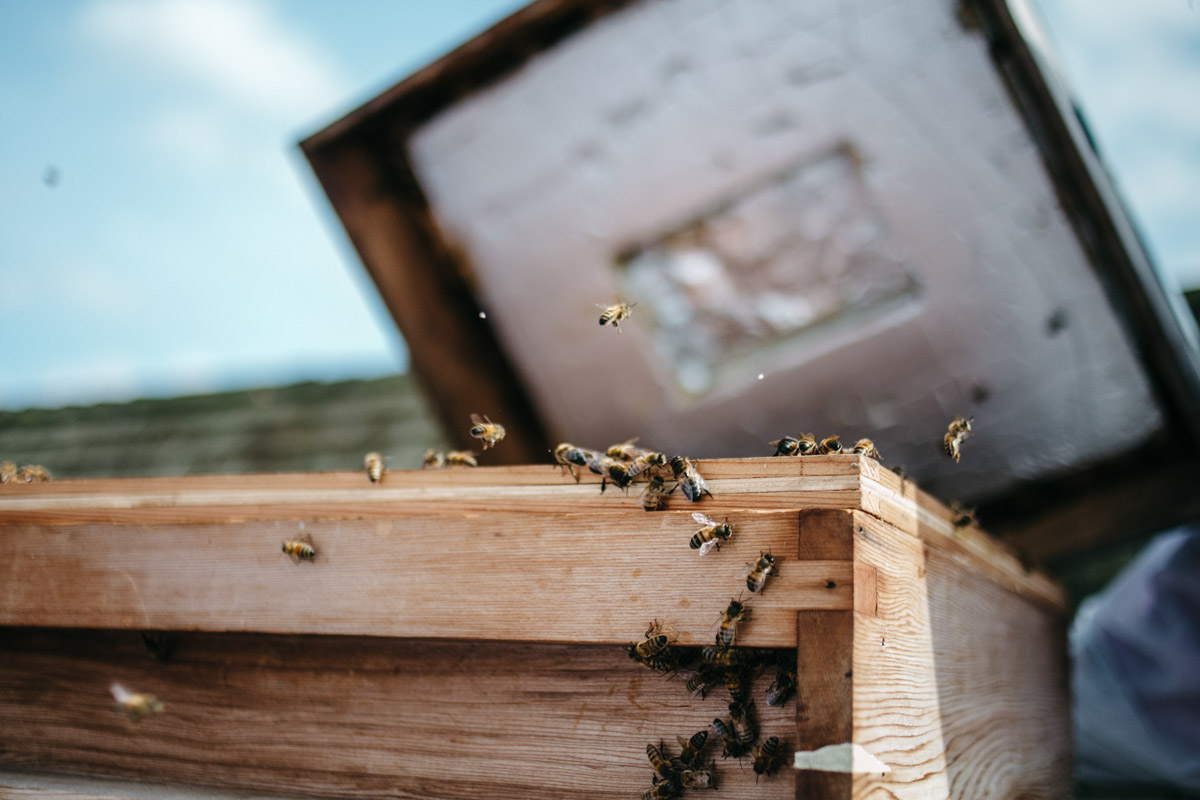
“We don’t have to kill anything to eat honey. We are talking about a sustainable, repeatable, non-invasive industry. We are taking honey away from the bees, but we are not shutting them away”, says Gibson.
Thankfully, it was a sunny day when I met Gibson. Upon entering his home above a retail shop, I was perplexed as to where the beehives would be kept; it didn’t look like a place where you might find them. Only when we reached the roof terrace, with views of The Shard building in the distance, did I get a better picture and understanding of how urban beekeeping works. Bee hives, it seems, can be kept in the most unassuming spaces; in this case on the ledge of a rooftop.
Though the adjacent buildings are situated closely together, Gibson’s neighbors are aware of what he does and have fully embraced his efforts. In fact, they even happily and comfortably sunbathe close to the bees. “I breed my bees to be docile and placid. They are never bored, they have enough space, and they’re healthy, good tempered bees, which means we can have them right close to humans”, says Gibson.
Gibson was mentored for a year, something he recommends for those who keen on becoming beekeepers, in order “to find out if you like it, develop your skills and knowledge, and to have someone there to help you when things go wrong”, he says.
Gibson approaches beekeeping as a knowledge-based business, something that requires little activity on his part. “The bees know what to do. They have been around for a long time; we don’t need to tell them how to make honey and wax.” He views beekeeping as a steering role, inspecting the hives regularly and recording information. Intervention is only required when there is disease or a swarm.
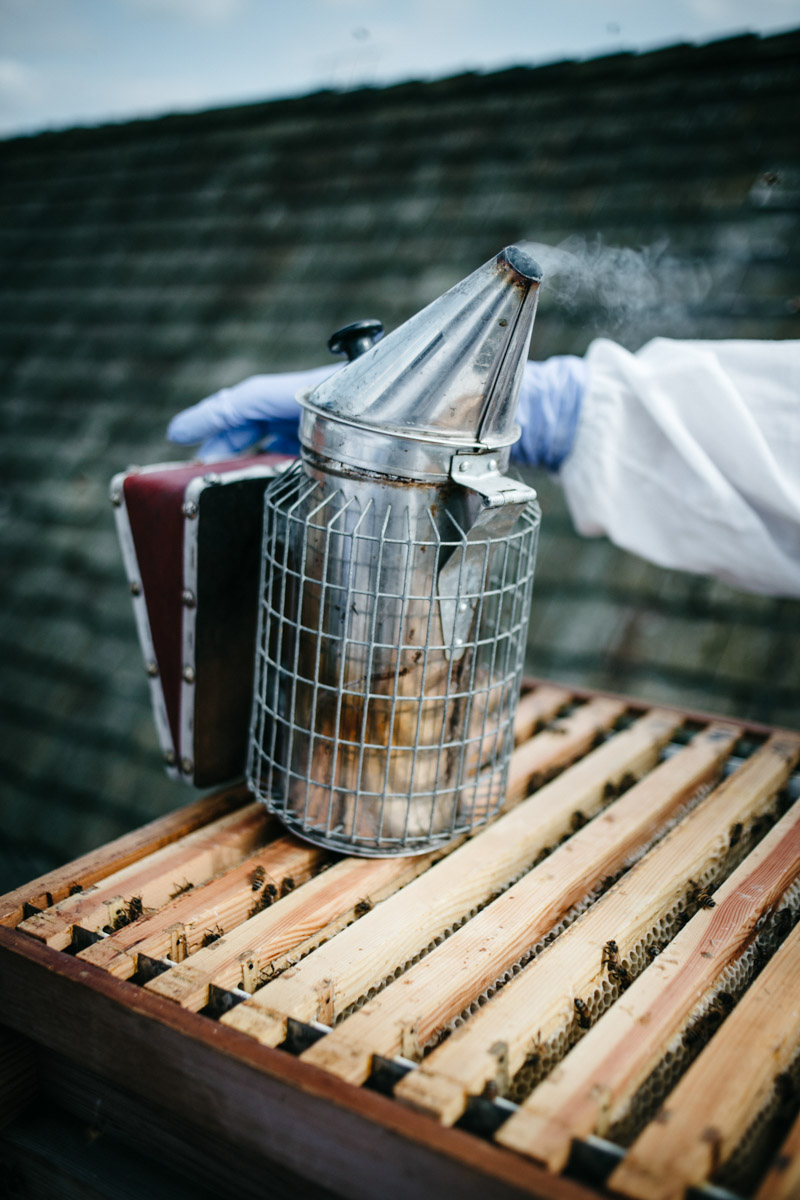
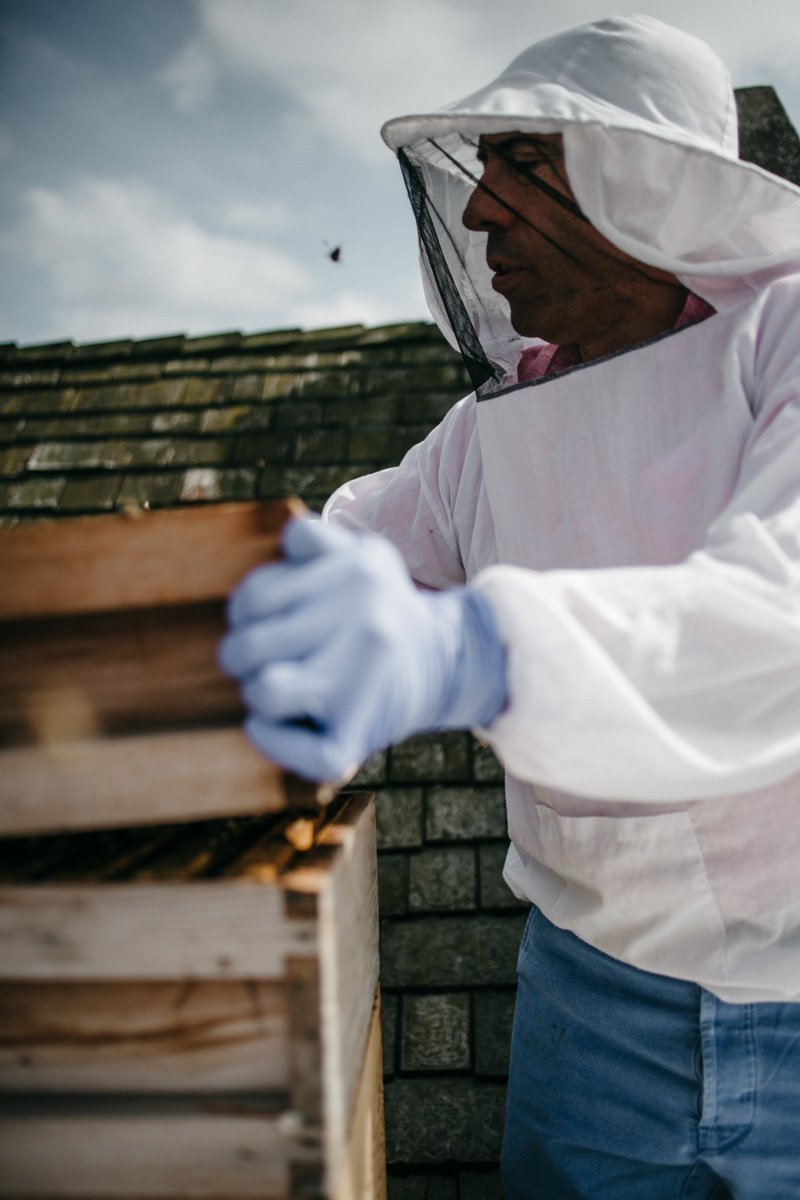
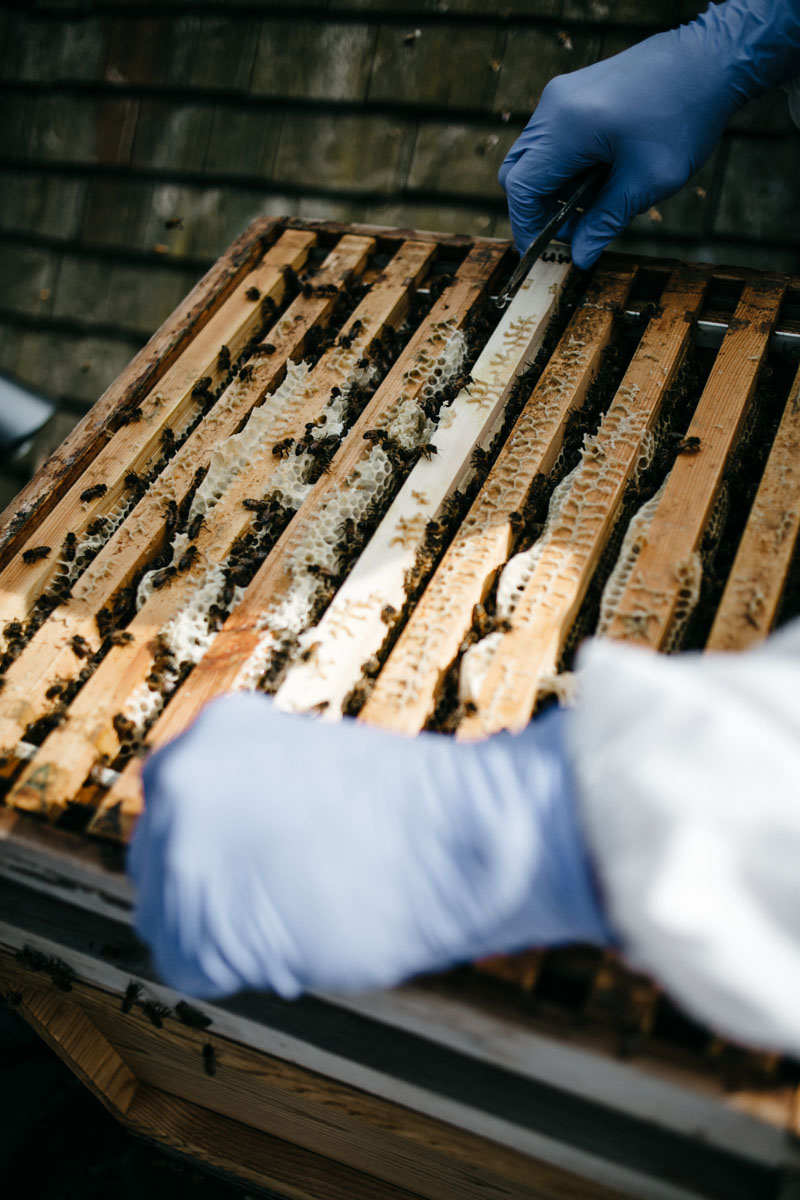
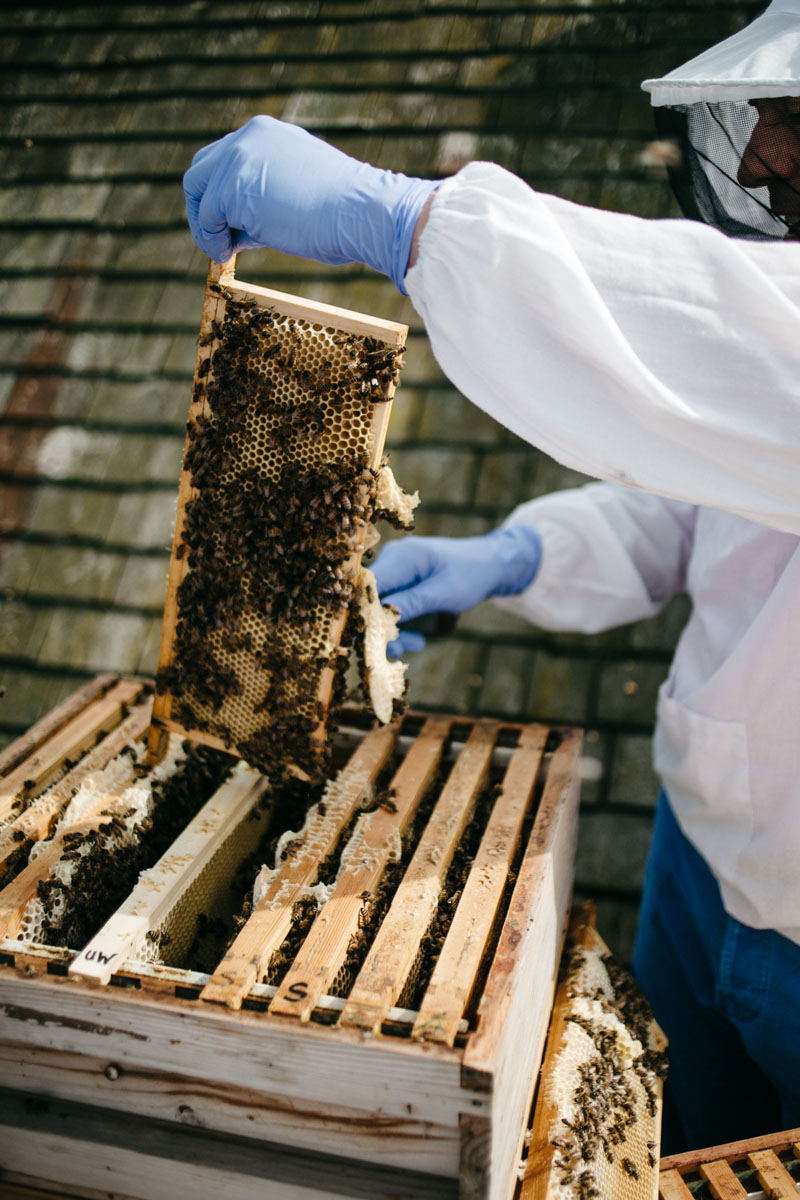
Beekeeping is a thriving hobby and business in London. According to the National Bee Unit database, there are approximately 2,500 hives within a ten kilometer radius of Gibson’s. It is also estimated that 25% of hives aren’t registered, which means a large volume of bees is putting pressure on London’s forage. As such, Gibson continually works with the city council to raise awareness, emphasizing the importance of planting more trees and bushes suitable for bees.
Not only is Gibson an advocate for urban beekeeping in London, but he also provides a consulting service in which he installs hives for hotels and chefs interested in producing their own honey. Bee hive risk assessment is also within his scope of offerings, as are educational services for people and schools.
Since bees are considered wild animals, there are no restrictions on keeping them. Those that choose to do so don’t actually own the bees, and neither are they responsible for them. “You must be cautious, careful and responsible if you are going to keep hives. If you are, you won’t have problems”, says Gibson.
“Bees are wild animals, but they sort of know us. They have been on earth with us for millions of years. I get a really strong sense that we’re not strangers to the bees.”
We dressed in beekeeping suits to get a closer look at the hives. Gibson proceeded to smoke the bees; a technique intended to calm them and alert them that we were going to open the hive. What struck me instantly as I approached the hives was the whirring, buzzing sound from the bees and the calming effect it had on me; it was almost hypnotic. It was fascinating to look inside a hive at such close range, and despite being disturbed––or “having their furniture rearranged”, as Gibson phrases it––the bees took no notice of us and continued on with their work.
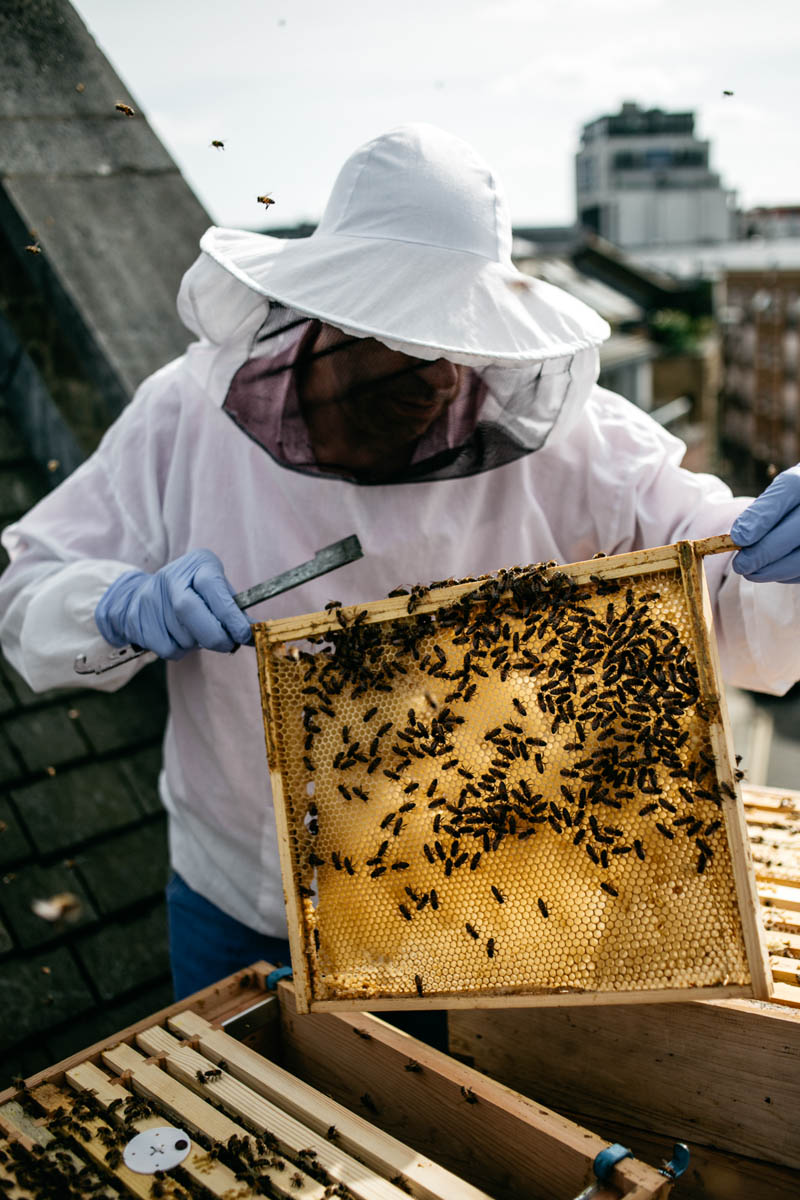
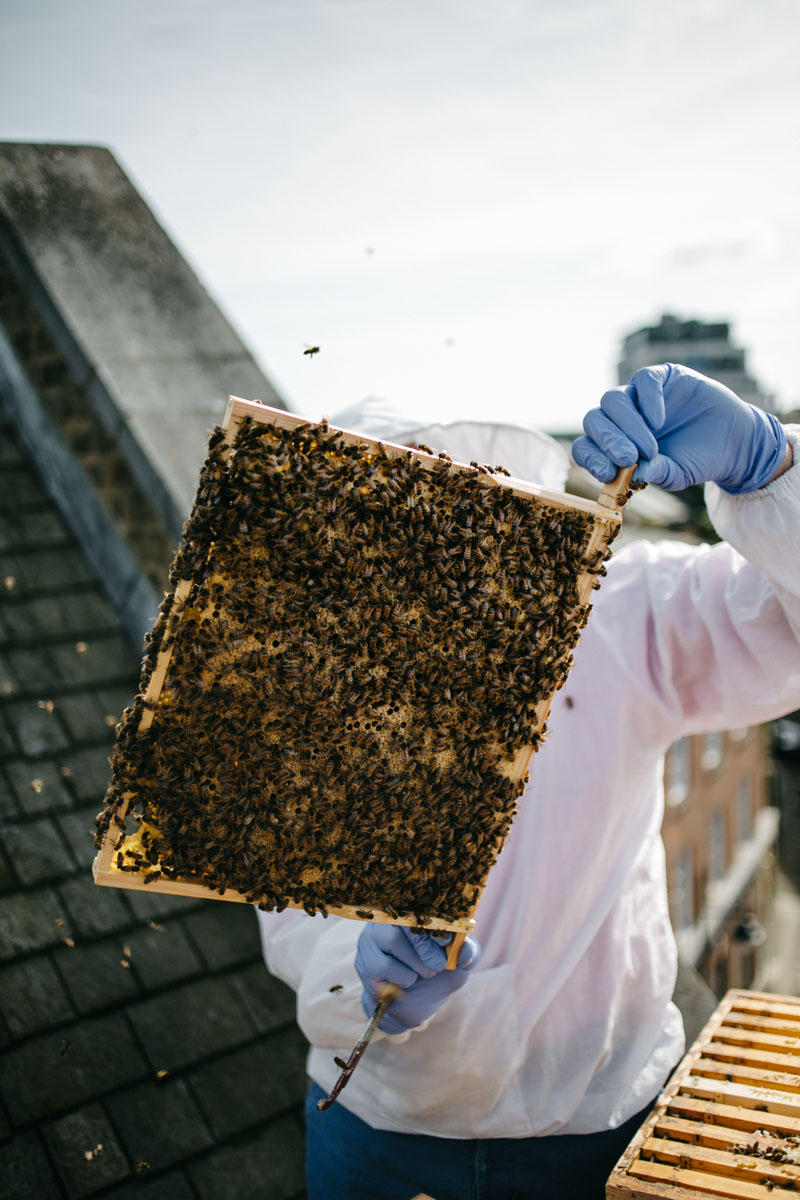
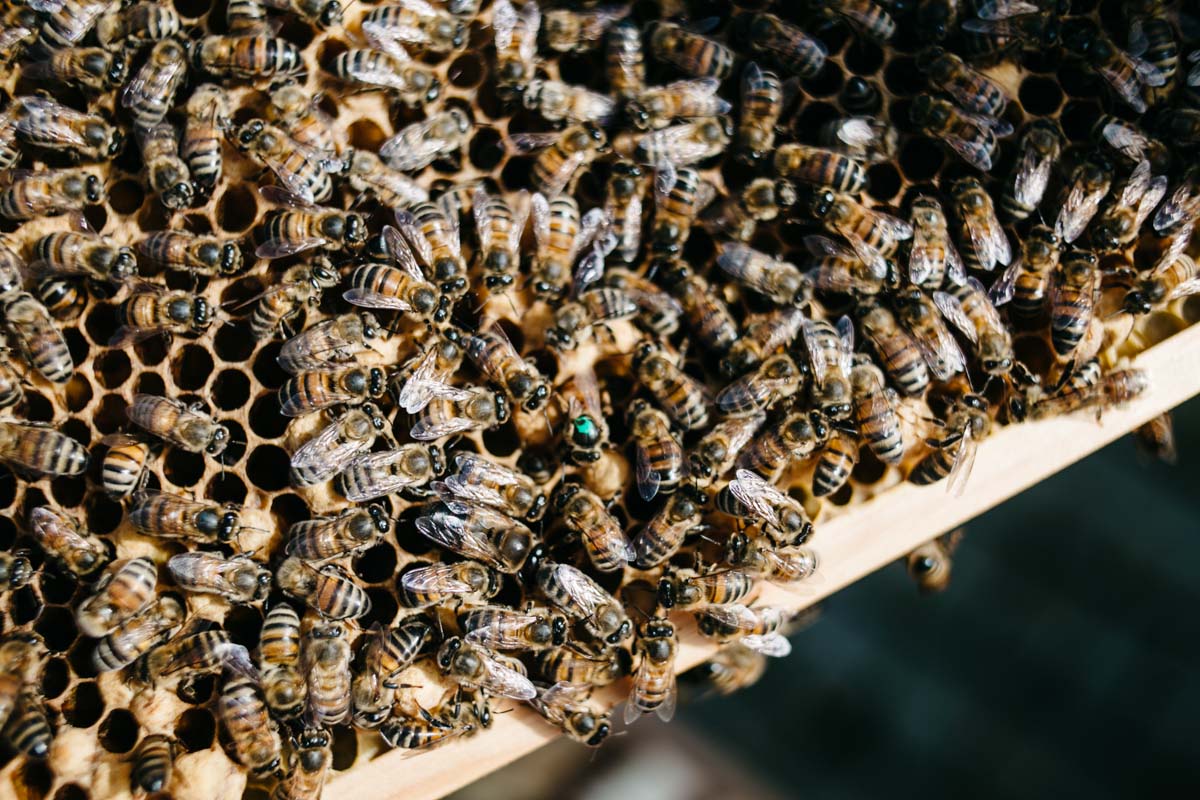
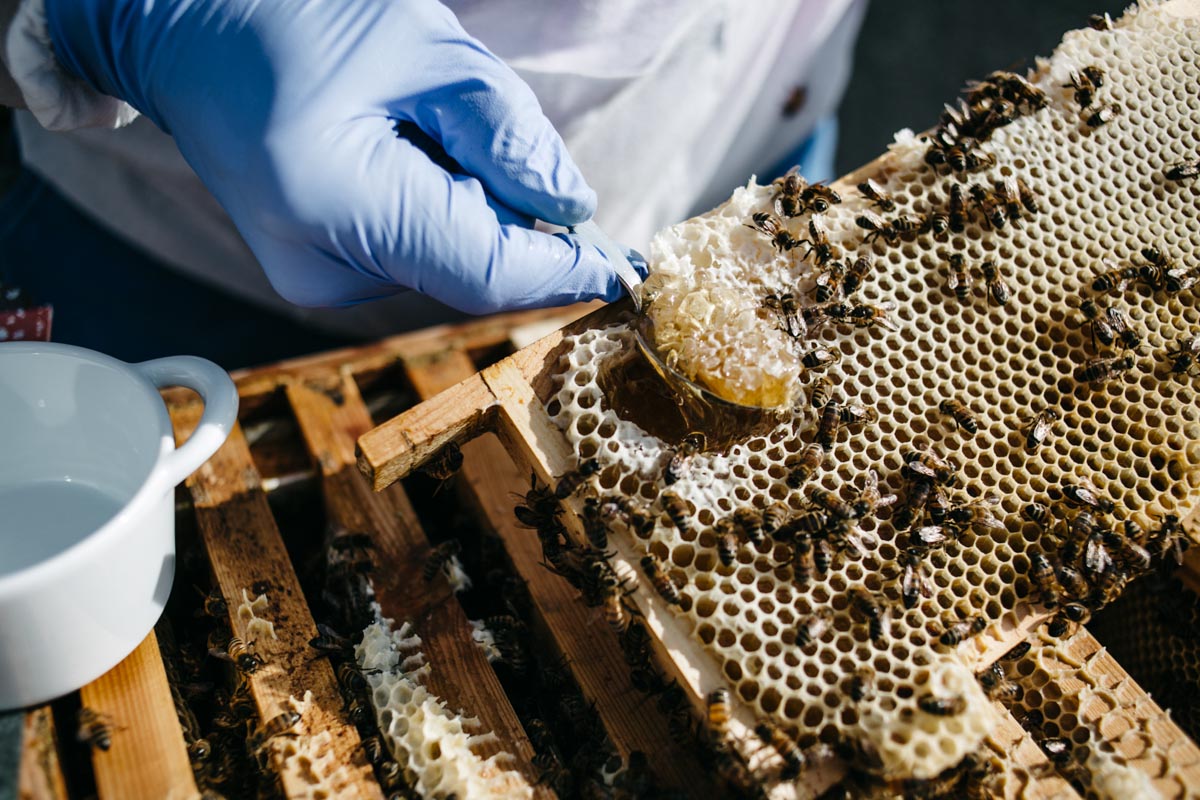
Throughout the year, Gibson will rear the bees, breed the queens, manage the hives, and once the honey is ready for harvesting, filter and treat the honey. Once harvested, it’s sold to local restaurants and given to neighbours, friends and family.
I wonder, does the honey harvested from city bees differ enormously from that of country bees? Gibson explains, “In the city there are constant flowering plants for bees to feast on. Hence, city honey is more complex and multi-floral compared to country honey”.
Should you find yourself in Dale Gibson’s neighbourhood, be sure to look up and look out for the bees of Bermondsey. If you happen to see one buzzing about, it is more than likely busy gathering nectar for one of the many hives in the area, perfectly at ease collecting the flavors of its urban environment.





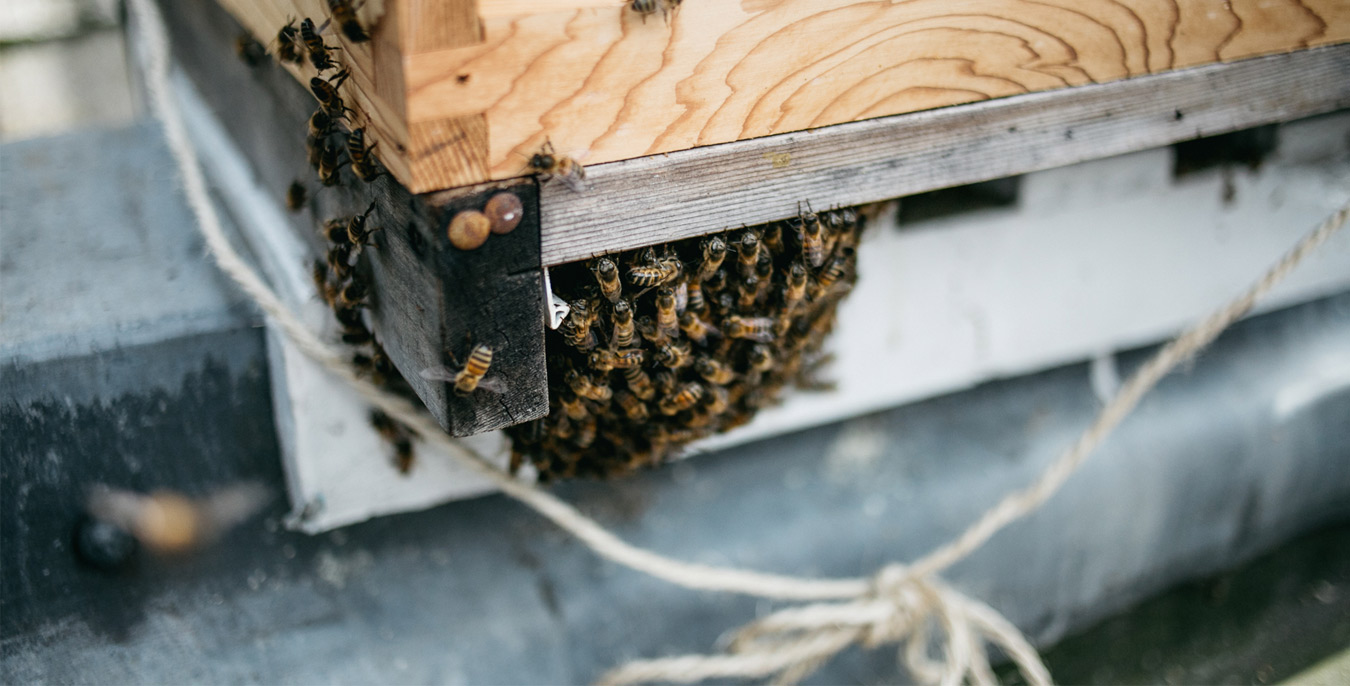

Our comments section is for members only.
Join today to gain exclusive access.